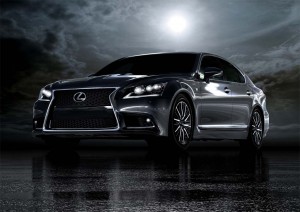General Motors and Ford have confirmed they will jointly develop a new generation of fuel-efficient automatic gearboxes. What they aren’t saying is that the new transmissions will use as many as nine and even 10 different gears in an effort to minimize fuel-consumption, about twice the number of gear ratios used in most of today’s automatics.
While it’s common to have a 21-speed bicycle and most big 18-wheel trucks use nearly as many speeds, the transmissions Ford and GM will develop are a significant step beyond what was normally considered necessary in the automotive environment. And that underscores the pressure manufacturers are feeling as they face the 37.5 mpg Corporate Average Fuel Economy standard going into effect in 2016 and the 54.5 CAFE rules to follow in 2025.
But is there a point of diminishing returns?
“Ford and GM have a very successful history in designing and jointly producing automatic transmissions,” a Ford spokesman told TheDetroitBureau.com, adding that, “We can confirm…that we have signed an MOU (a Memo of Understanding) to jointly collaborate in the development of a variety of all-new, fuel-efficient transmissions.”
The makers are reportedly working on a 9-speed automatic gearbox for use in front-wheel-drive models, and a 10-speed for big rear-drive pickups and SUVs.
They are by no means alone. Chrysler CEO Sergio Marchionne recently confirmed the maker will introduce a new 9-speed automatic when it launches a replacement for the Jeep Liberty SUV next year. And, “if I get my way we’ll have it on all our front-drive models” within a few years, he said in response to a question from TheDetroitBureau.com.
Plenty of makers are now using 7- and 8-speeds, including Lexus, which offers an 8 on its LS model, and Mercedes-Benz, which has a similar transmission on its flagship S-Class.
Even manual transmissions are adding gears. Porsche recently introduced the world’s first mass market 7-speed manual on its updated 911 sports car.
It wasn’t all that long ago when a senior General Motors official questioned the benefit of going beyond four speeds. And even more recently, now-retired GM “car czar” Bob Lutz questioned whether the industry had reached “a point of diminishing returns” with 6-speeds like those used in many of the maker’s newest midsize and larger models.
When the industry was dealing with a 27 mpg CAFE standard that was probably true. Adding gears can be costly – and eat up valuable real estate under the hood. But the higher figures force manufacturers to seek out “low-hanging fruit” wherever possible, even if it means only a few tenths of a mile per gallon at a time, Ford global product development chief Derrick Kuzak said in an interview shortly before his retirement earlier this year.
The latest transmissions, in fact, can boost fuel economy by as much as 5% and even 8%, depending upon the applications, according to industry engineers. And in some cases, clever packaging can add more gears without adding much space or weight.
The advantage of using more gears is that the engine can continue to operate close to its most efficient RPM range at all times. The downside is that some of the latest gearboxes can spend a lot of time “hunting and seeking,” or shifting between gears, which can be unpleasant for driver and passengers.
Problems with transmissions tuned to maximize mileage resulted in a number of complaints about the Fiesta and Focus models, over the last several years, lowering Ford’s score in the closely watched J.D. Power Initial Quality Survey.
So, engineers have been tinkering with the software that controls transmissions to smooth out shifts. Many of the newest gearboxes, such as the one in the latest Honda Accord, use programming that constantly watches the way a vehicle is driven in order to tweak shift patterns. That might mean a very different gearbox behavior for an aggressive driver compared to a “hyper-miler” operating the same vehicle.
The GM/Ford joint venture, like much of the work being done on transmissions these days, focuses on automatics – which account for well over three-quarters of all the gearboxes used in American vehicles. Some makers no longer even sell manuals. And it doesn’t portend well for the clutch that many of the newest automatics are actually yielding better mileage than manuals.
But there are other alternatives vying for industry usage. The new Nissan Altima and the latest Honda Accord can both be purchased with Continuously Variable Transmissions, or CVTs. These don’t use standard step-gearing but are designed to be able to flow through an infinite range of gears in order to absolutely maximize engine efficiency.
Proponents like Nissan have suggested CVTs can yield as much as a 15% improvement over conventional gearboxes. But they’ve often had a down-side in the form of “rubber-banding.” With most of these transmissions, when you step on the throttle the engine will immediately rev but the vehicle itself will feel like it’s lagging behind.
The new Altima and Accord models have both used software to minimize rubber-banding, and some new CVTs imitate step-gears with the touch of a button, or can be shifted manually. But a number of makers, such as Audi, have pulled back on the use of CVTs in recent years due to customer concerns.
Another gearbox making inroads is the dual-clutch manual, known by various names such as the Porsche PDK, or Porsche Doppelkupplungsgetriebe. Essentially, these are electrically shifted manuals. There is no clutch, though drivers can manual operate the box in a more aggressive fashion than is typical of a true automatic. Like automatics, the newest double-clutch packages often deliver better mileage than both manual transmissions.
What seems clear is that advanced transmissions will play a critical role in meeting new mileage rules. They will add more up-front cost, no doubt, but should translate into lower fuel bills over the life of a vehicle.

